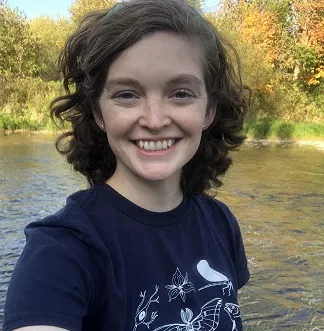
Research Awards
To help facilitate high-level research at the University of Toronto, the Centre for Urban Environments (CUE) is pleased to provide funding on a competitive basis to graduate students and postdoctoral researchers affiliated with CUE. Applications can be submitted by any CUE member based at the University of Toronto Mississauga, regardless of discipline, so long as the proposed research advances CUE’s mission of being a leader in urban environmental research and sustainability. Research that bridges across traditional disciplines is particularly encouraged, with the awarding of proposals spread equally across the social and natural sciences.
The maximum amount of funding available per project is $2,000. Additional information regarding the application process and required documentation is available here. Those interested in applying are also encouraged to consult our list of past winners. A call for proposals will occur in January each year with a February deadline.
If you are not currently a member of CUE and would like to be affiliated with the Centre, please contact the Director at cue@utoronto.ca.
2024 Winners
Project Title: Analyzing the remaking of public spaces in an era of digital mobilities
Project description: This research explores how on-demand food delivery, shared scooters, and sidewalk delivery robots remake the material composition, use, and meaning of public spaces and how this affects urban climates and equity. Most research examines digital mobility services individually, failing to address their crucial interdependence in advancing a “systematic remaking of the urban”. The aim is thus to explore the joint impact on public spaces and to generate empirical knowledge that informs critical assessments of municipal regulation.

Student: Emilia Bruck
Supervisor: Prof. Shauna Brail
Project Title: Study of Colonial and Postcolonial Delhi (1930-2000 CE)
Project description: Delhi, despite its forty percent forest cover and a green ridge crossing through two-third of the city’s geography, is currently one of the world’s most polluted cities. However, my research suggests that one must take into consideration the historical context, both colonial and postcolonial, to understand the shifting environments and its differential impact on the marginal communities.
This project will study the impact of shifting ecologies, urban environments, and their reconceptualization in colonial as well as postcolonial state policies on marginal communities in urban Delhi. Building on my last year’s research on city’s modern planning, I shall focus on the period from the establishment of new British colonial capital, New Delhi, in 1930 till the 2000s, almost a decade after the Indian postcolonial state adopted neoliberal economic policies. This research project aims to cater to the UN Habitat’s World Cities Report (2022), as well as contribute towards CUE’s vision that reiterates for more sustainable, accessible, and inclusive urbanization, especially for urban marginalized groups.

Student: Jatin
Supervisor: Prof. Malavika Kasturi
Project Title: Eco-evolutionary dynamics and the role of human activity in modifying ecosystem function and ecosystem service provision within cities
Project description: Urbanization is rapidly altering the ecology and evolution of species globally, but we still know very little about how ecological and evolutionary processes within cities interact and influence each other (“eco-evolutionary dynamics”). White clover (Trifolium repens; Fabaceae) is a perennial plant common in urban and rural environments. It forms important interactions with mutualists and natural enemies that play key roles in ecosystem processes. A recent global study showed that urbanization frequently drives adaptive evolution of white clover populations in the production of hydrogen cyanide (HCN), an anti-herbivore defence. Urban populations tend to have fewer plants that produce HCN (“cyanogenic”) than rural populations, but little is known about the ecological consequences of this cline, its evolutionary drivers, or its effect on ecosystem functioning. This study will experimentally test both how urban environments can cause local adaptation (ecology influencing evolution), and how adaptation to urban environments can alter species interactions and ecosystem processes (evolution influencing ecology). By examining interactions between a globally distributed urban species, white clover, and multiple ecologically important components of the community and ecosystem, this study will contribute to our understanding of eco-evolutionary dynamics and the role of human activity in modifying ecosystem function and ecosystem service provision within cities.

Student: Ella Martin
Supervisor: Prof. Marc Johnson
Project Title: Beyond Greenery: Unveiling the Diverse Impact of Green Infrastructure in Social Housing Residents within Four Low-Income Neighbourhoods of Toronto
Project description: The research aims to explore the diverse impact of Green Infrastructure (GI) on social dynamics in low-income neighbourhoods in Toronto. In this study, social dynamics are defined as the subjective well-being, social cohesion, and cultural identities of a community, while GI is natural elements such as trees, green spaces, gardens, bioswales, and green roofs. The study poses two primary research questions: 1) How can green infrastructure contribute to improving the social dynamics of social housing residents in low-income neighbourhoods in Toronto? 2) What types of green infrastructure are preferred and prioritized by residents who live in social housing units? These questions will be addressed through spatial analysis of existing GI and interviews with social housing residents in four neighbourhoods.

Student: Jean Issac Mendita
Supervisor: Prof. Tenley Conway
Project Title: Between Flooding and Fortune: The Tides of Green Growth in Ho Chi Minh City
Project description: This project examines how the pursuit of a national “green growth strategy” in Vietnam is remaking the urban ecology of post-war Ho Chi Minh City (HCMC). Specifically, my project will look at the urbanization of Can Gio, HCMC’s only coastal district. Once the site of a military base for revolutionary forces, approximately 57% of Can Gio’s mangrove forests were destroyed by the US military’s defoliation campaigns during the Vietnam War. Following intensive reforestation efforts over two decades, it gained recognition as Vietnam’s first “biosphere reserve”, a conservation model that “promotes solutions reconciling the conservation of biodiversity with its sustainable use”. Today, these uses encompass a variety of economic activities reliant on the forest’s unique ecology, such as shrimp farming, salt farming, and household forest management. Yet plans to develop the region into an ecotourism city at the cost of over $9 billion raise questions about how the residents of this peri-urban district will continue to make a living in the face of environmental degradation driven both by urbanization and climate change. This research project seeks to understand the effects of “green growth” policy on human environment relationships in Can Gio, and the implications of this for coastal cities around the world grappling with the climate crisis and the politics of its management.
Student: Jennifer Su
Supervisor: Prof. Zoe Wool
2023 Winners
Project Title: Normalizing meat-free meals: The effectiveness of defaulting meat-free options on menus for online food-ordering
Project description: Transitioning to a more sustainable food system involves reducing meat consumption, however, this change is made difficult because meat is integral to many of the food cultures in Canada where meat is generally regarded as the normal, default food. The meat-as-normal stereotype is promoted by social institutions of urban environments such as restaurants. Menus often show a variety of meat dishes which may or may not be accompanied by disclaimers about vegetarian versions being available upon request. Instead of offering vegetarian food as the opt-out choice to meat counterparts, to nudge consumers to choose the pro-environmental option, menus could be designed to take advantage of the consumer tendency to stay with the default option.
This research explores consumption behaviour in Canada through setting the meat-free option as the primary choice on menus and relegating the meat option to the secondary choice. As restaurants and online food-ordering are a regular part of urban living, insight from this study into menu effectiveness could inform policy, restaurants, and food companies on how to promote healthier food choices. Changing the social norms of urban foodscapes to better the individual, society, and the environment can create more sustainable cities.

Student: Vicky Boyd
Supervisor: Prof. Nicola Lacetera
Project Title: Spatial Analysis and Correlation of BTEX Air Pollution with Social Vulnerability in Hamilton, Canada
Project description: Hamilton, Ontario, is an industrial city in Canada with a population of over a half million people. Industrial facilities in the city contribute to greater concentrations of pollutants and poorer air quality compared to other Canadian cities. Poor air quality has been directly linked to adverse health outcomes, including Chronic Obstructive Pulmonary Disease (COPD), asthma, cardiovascular disease, diabetes, and lung cancer. In addition, air pollution is correlated to increased mortality.
This project aims to investigate the spatial correlation of ambient benzene, toluene, ethylbenzene, and xylene (BTEX) air pollution, a subset of volatile organic compounds, with social vulnerability and other criterion air pollutants in Hamilton, Canada. Specifically, the project will measure BTEX concentrations using stationary passive samplers at 60 locations, correlate BTEX levels with with census and health data, and create a public dashboard of air pollution exposure using ArcGIS online.

Student: Jack Cheng
Supervisor: Prof. Matthew Adams
Project Title: Characterizing Respirable Microplastics in the Indoor Air Environment of Canadian Homes
Project description: Microplastics (MPs) are a diverse contaminant class that persist in all environments, including the air. Current research indicates that MPs are significantly more concentrated in indoor air, which warrants special concern for human exposure as Canadians spend 90% of their time indoors. Nevertheless, our knowledge of indoor MP emissions and their exposure risks is limited due to a lack of suitable methods. This research seeks to explore the use of novel sampling and size-indiscriminate analytical tools to establish if and to what extent MP2.5 persist in indoor air and, in turn, assess human exposure risks

Student: Lauren Ead
Supervisor: Prof. Matthew Adams
Project Title: Political Economy of Low-Carbon Mobility Transitions in Small Cities in India
Project description: The climate emergency has become the defining issue of our time. With an estimated contribution of 24%, transport is one of the most significant contributors to the worldwide production of greenhouse gases. These concerns have led many scholars to focus on low-carbon future mobilities scenarios . Taking their cue from these suggestions, the government of India has set a target of 70% of commercial vehicle sales to be in the electric vehicles category by 2030.
This project investigates the political economy of low-carbon transitions in shared mobilities in Amritsar – a small city in northern India. The project seeks to understand: What impacts has the government’s push towards electrification of shared mobility vehicles had on their operation? And how is the government accommodating the vehicle-owners’ concerns in its push towards a sustainable future?

Student: Gaurav Mittal
Supervisor: Prof. Shauna Brail
Project Title: Floods and psychosocial wellbeing among residents of Accra and Kumasi, Ghana
Project description: The Intergovernmental Panel on Climate Change has forecasted an increase in extreme weather events, including flooding, that would affect millions of people around the world, including the most vulnerable residing within low-middle income countries in sub-Saharan Africa. Floods accounted for more than half (64%) of all disaster events in sub-Saharan Africa, affecting the livelihoods of around 53 million people and the cause of death for over 14 thousand people between 2000 and 2019; making floods the second most frequent and devastating environmental disaster in the region. The study will be conducted in two Ghanaian cities including Accra and Kumasi. The two cities were purposively selected for their contrasting flood patterns. Because of their colonial past and the lack of urban planning, the booming population growth in cities and continued trend of urbanisation has resulted in an increase in informal communities in flood-prone zones.
Severe flood events have been linked to a variety of public health issues, including psychological distress, anxiety, depression, somatization and post-traumatic stress disorder. The connection between neighbourhood characteristics, floods and psychosocial well-being has been insufficiently researched, especially in emerging cities in African countries. A dominant focus on the geophysical and biophysical causes of flood events confines analysis to the source of flood events and ignores the dynamics and processes at the neighbourhood level. The primary objective of this research project is to investigate the mechanisms through which structural and social neighbourhood effects mediate urban floods and impact psychosocial wellbeing in Accra and Kumasi, Ghana

Student: Lily Zhang
Supervisor: Prof. Vincent Kuuire
Project Title: Impacts of Perceptions of the Built Environment on Active Transport: A Study Using Street View Imagery, Global Positioning System Trajectories, and Accelerometer Data
Project description: Active transport refers to physical activity behaviors during trips (e.g., walking or cycling), which can benefit human health, such as reducing the risk of overweight/obesity. Active transport can be promoted by the perceived quality of the built environment in walkable pathways and cycle paths. For example, unfavorable perceived safety of the built environment can discourage active transport.

To understand the impacts of such perceptions on active transport, this study aims to explore the relationship between the intensities of individuals’ active transport, as tracked by accelerometers in sport watches, and perceptions of the built environment during travels, as derived from street view imagery along Global Positioning System trajectories.
Student: Hanlin Zhou
Supervisor: Prof. Jue Wang
Project Title: Environment and Modern Planning: Implications for Dalit Settlements in Delhi, India
Project description: With the shift of the colonial capital of India to Delhi in 1911, the city expanded in terms of both space and population. The ‘untouchable’ communities or ‘Dalits’—who are ascribed the lowest status in the ‘caste-based’ social hierarchy—have been a significant part of this history. At the close of the century, every two out of ten residents in Delhi were Dalits.
This project investigates how the social status and ‘caste’ shaped the morphology of Dalit settlements and housing in the city and its rural penumbras. To what extent were structures of oppression reconfigured in the changing spatial geography of Delhi? The project focuses not only on the stigmatizing factors of caste structures but also on how communities accommodate those systems of oppression to transform them into a force for political action. This project will focus on the implication of environment and city law on the urban marginalized communities. I propose to examine the impact of modern planning, law, and environment on means of livelihood and everyday experiences of Dalit residents in Delhi’s urban areas. How does the nature of their livelihood and the space of their residence make Dalits medically ‘dangerous’ and more vulnerable, particularly during epidemics?
This project, will utilize diverse interdisciplinary methods. It includes critical analysis of a wide range of archival sources in Delhi. Field visits, and oral history interviews of the residents at Kusumpur Pahadi and Karawal Nagar’s Harijan Basti will be conducted.

Student: Jatin
Supervisor: Prof. Malavika Kasturi
2022 Winners
Project Title: Towards building resilient and healthy communities: Exploring the Covid-19 Journeys of Black communities in the GTA
Project Description: This research investigates health equity with respect to the disproportionate impacts of the covid-19 pandemic on Black residents in the Greater Toronto Area (GTA), Canada to increase the awareness and cultural safety of health messaging and care. Black residents in Canada are at a higher risk of COVID-19 risk infection, morbidity, and mortality as well as inequitable economic impacts with the associated long-term impacts unknown. Data from Statistics Canada indicates as of March 2021, only 56.4% of Black residents in Canada indicated their willingness to receive the COVID-19 vaccine compared to 76.9% of the overall population.

Studies in Ontario on vaccine coverage indicated the inequitable distribution of vaccines especially in racialized populations and low-income neighbourhoods in the M- and L-postcode areas of the Greater Toronto Area11. Research indicates disease outbreaks are increasing in frequency and resilient and healthy communities are better placed to respond to such threats.This research is informed by political ecology of heath theory, adopts a unique multiscalar and qualitative design to explore the lived experiences of Black residents in the GTA.
Student: Thelma Abu
Supervisor: Prof. Kathi Wilson
Project Title: Demystifying Traffic-Related Air Pollutants under A Highway Bridge
Project Description: Parks are well-known for the numerous health and social benefits. In 2018, the City of Toronto opened Bentway Park to reclaim unused urban space, promote physical activity and increase social gathering. The park is located beneath the Gardener Expressway, used by approximately 140,000 vehicles on weekdays. The effect of vehicle emissions on air quality in this park is unknown. Traffic-related sources of air pollution (TRAP), including volatile organic compounds (VOCs) are causing growing concerns among epidemiologists and toxicologists. Exposure to TRAP can cause acute symptoms including headaches and dizziness, and chronic effects including cancer, central nervous system disorders, and the development of childhood asthma.

This study aims to quantify how TRAP differ between below-road parks and ground-level parks with the same land use and local emission sources.
As urban areas recapture land through under bridge development, users may be exposed to elevated air toxics. This will be the first study of its type to examine this unique geographic urban phenomenon.
Student: Jenny Cui
Supervisor: Prof. Matthew Adams
Project Title: Building blue cities: Understanding urban stream ecohydrology and nutrient processing
Project Description: The significant focus on building ‘green’ cities and increasing ‘green’ infrastructure demonstrates an overwhelming desire for sustainable urban spaces. This research is often focused on ecology and building natural green spaces within the urban environment. While the importance of green space in the urban environment cannot be overstated, the holistic nature of environmental systems is often overlooked. For this reason, a shift in thought is proposed: while we make our cities green, at the same time, we must not forget to make them blue. Blue cities have clean surface waters; streams and ravine systems which are respected parts of the urban infrastructure, and effective sewer and rainwater management systems. Currently, a gap in our knowledge of aquatic systems in the urban environment is preventing blue cities from becoming a reality. This research project aims to characterize the urban soil-water interface, an important area for biogeochemical transformations and the filtering of pollutants. This buffer at the interface of terrestrial and aquatic environments, also known as the riparian zone, is widely studied in agricultural settings for its ability to remove fertilizer pollutants. However, the riparian zone is largely unstudied in the urban environment. This research project aims to characterize urban hydrology and nutrient removal in the riparian zone. This research will take place at three distinct stream locations in the Greater Toronto Area, and involves both field work and laboratory analysis of samples. The conclusions from this research will advise land management practices in urban green and blue spaces
Student: Zoe Evans
Supervisor: Prof. Tim Duval
Project Title: Spatial and Socioeconomic Disparity in Polyaromatic Hydrocarbons Pollutant Exposure
Project Description: Ambient air pollution contributes to seven million deaths annually, making it the single biggest environmental worldwide health risk (WHO, 2021). Hamilton and Burlington, ON, suffer from poor air quality due to their proximity to a major industrial hub and congested freeways. The Ontario Ministry of Environment, Climate Change and Parks operates two monitors measuring polyaromatic aromatic hydrocarbons (PAHs), including the carcinogenic chemical benzo(a)pyrene, which indicates concentrations far above Ontario guidelines. Currently, we do not have any observations on the spatial extent of PAHs as monitoring is conducted at only two locations near industrial sources. Neighbourhood scale measurements are necessary to assess population-level risks to PAHs. The objective of this study is to assess the variation in polyaromatic hydrocarbon exposure as observed by spatial and socioeconomic differences in Hamilton and Burlington, Canada. The research will take place in Hamilton and Burlington. Pollution measurements will be made with passive air samplers installed on streetlights radiating at increasing distance from the industrial core.

This project will provide the most spatially detailed insights on polyaromatic hydrocarbons exposure in Canada. As co-collaborators, the City of Hamilton and Environment Hamilton will use the outcomes of this study to assess whether wards’ and population groups’ air pollution concentrations are not being adequately represented by the cities permanent air monitoring stations to better target where future air monitoring stations should be implemented.
Student: Elysia Fuller-Thomson
Supervisor: Prof. Matthew Adams
Project Title: Newcomer Engagement and Integration through Inclusive Environmental Decision-Making
Project Description: Canada proudly wears its label of being ‘a country of immigrants’ as it welcomes hundreds of newcomers each day. As a significant proportion of immigrants settle in urban centres, local governments are presented with numerous challenges and opportunities as it relates to accommodating this burgeoning population. Beyond addressing the complexities of evolving planning requirements in anticipation of the growing numbers of new arrivals, municipalities are also grappling with fundamental questions relating to how newcomers are integrated into society. Such growth naturally intersects with concerns of how cities are being built to reflect the principles of resiliency, adaptability, and sustainability, especially in response to the immediate threats of climate change. Research indicates that the contributions of immigrants, despite their important role in promoting sustainable practice, may be weakened by infrastructural, structural, and cultural barriers. In this light, the proposed project has two main objectives: 1. To explore how a comprehensive approach to the engagement of newcomers in environmental planning processes can lead to better environmental outcomes; and 2. To determine how inclusive decision-making processes can facilitate immigrant integration.

By using case studies from selected municipalities in the Greater Toronto Area (GTA), this project seeks to resolve: How can practitioners most meaningfully incorporate newcomers into the environmental planning process? How can immigrants’ distinct strengths be accommodated and their particular needs be adapted to? And how can this form of engagement result in solutions that best promote sustainable practices?
Student: Shervin Ghaem-Maghami
Supervisor: Prof. Vincent Kuuire
Project Title: Examining Change of Heavy Metal Pollutants and Nutrients in Urban Riparian Zones over Space and Time
Project Description: This project specifically focuses on biogeochemical concentration and fluctuation of nutrients and heavy metals over time and space in Southern Ontario urban riparian zone areas. Riparian zones are recognized worldwide for their buffering capability of anthropogenic nutrients and heavy metals that are sourced from either urban runoff or agriculture . This project will answer the following: how much of heavy metals and nutrients are output from human activities into their closest body of water, and how do these concentrations fluctuate over area and season? Nutrients and heavy metals introduced into reservoirs such as soils, groundwater, lakes, and streambeds can directly impact aquatic systems and affect wildlife, ultimately endangering ecosystems and human health. Heavy metals and nutrients have long residence times in soils, affecting aquatic networks over time. Heavy metals including As, Cd, Cu, and Zn can have adverse health effects in humans in high concentration. High amounts of nutrients that are found in runoff from sources such as fertilizers, fossil fuels, and livestock ultimately decrease aquatic ecosystem biodiversity. This study will encourage engagement between scientists and the public and will increase awareness of heavy metal pollutants. Statistical analysis will then be conducted to examine the correlation between pollutant accumulation and urbanization. This project will provide analytical data necessary to help with future urban regulations regarding constructing municipalities that will adapt to rising heavy metal and nutrient inputs.

Student: Megan Holland
Supervisor: Prof. Tim Duval
Project Title: Effect of Stormwater Management Pond Effluent on Stream Water Quality
Project Description: Stormwater management ponds (SWMP) have been implemented in many areas and are considered the best management practice to contain stormwater flow from urban impervious surfaces and improve water quality before discharge into streams.There is already a significant amount of research into SWMP dynamics which has shown they develop poor quality water that can be thermally enriched and oxygen depleted. In the GTHA, degradation of stream water quality as a result of SWMP effluent could impact the health of stream organisms such as the regionally endangered Redside dace as well as other fish and macroinvertebrate. SWMPs are thought to allow for the accumulation and settling of particles that are suspended in the water column as well as the retention and absorption of nutrients and other contaminants such as heavy metals, reducing downstream export. However, recently evidence has shown that SWMP internal chemical transformations result in effluent water laden with unintended contaminants. Yet few studies have investigated the measurable effect that water discharged from SWMPs has on urban and suburban stream water quality. This project will determine the geochemical impact of SWMP effluent on receiving steam environments and if effluent quality is significantly affected by seasonal change. Second, the effect of SWMP structure such as forebay type, size, depth, and age on the quality of effluent and its impact on receiving streams will be investigated. These objectives would work toward improving our understanding of hydrogeochemical flow paths and the impact of pollutants on fresh water systems in urban environments.

The study area of this research will be at 24 SWMPs within the municipalities of Mississauga, Brampton, Oakville, and Milton, Ontario. This data would improve our understanding of current urban stream management practices and inform on the impact that SWMP effluent could have on stream organisms and ecosystem health.
Student: James Kanarek
Supervisor: Prof. Tim Duval
Project Title: Urban Migration and Sleep Health among Indigenous Wixárika of Jalisco, Mexico
Project Description: This research project explores the sleep patterns of people from the Wixárika Indigenous group in Mexico, whose communities are undergoing rapid urbanization. Although Wixaritari have maintained their traditional, eco-centred ways of life through Mexico’s colonization, individuals are increasingly moving to cities to expand their economic opportunities, with potential consequences for their sleep health. This project explores the question: How does urban migration affect sleep duration and quality in Indigenous Wixárika communities in Mexico. People living in more urbanized environments report higher rates of insomnia than people living in more rural settings. Sleep disturbances in urban contexts are likely a result of reduced exposure to sunlight during the day and use of artificial lighting at night, which are associated with disrupted sleep schedules. However, the majority of sleep research is conducted in culturally Westernized, economically developed contexts, and may not be representative of the global human experience. In order to understand the health concerns of urbanization from a global perspective, it is necessary to identify the complex socio-ecological factors that affect sleep health. Furthermore, Indigenous people in Mexico have experienced long-standing health inequities as a result of colonization and discrimination, which is compounded by increased social vulnerability of migrant workers. Thus, a better understanding of how the rural-urban transition shapes sleep outcomes is critical for identifying and addressing health disparities experienced by these groups. The sleep patterns of Wixárika people living in a rural community, San Andrés, and those who are first-generation migrants living in urban Guadalajara will be measured. Participants will be recruited through project collaborators at the University of Guadalajara and local collaborators in the Wixárika community. Sleep patterns will be measure by asking participants to wear actigraphs, which are wrist-worn devices that calculate sleep characteristics such as nightly sleep duration and sleep quality. Participants will wear the watches for a continuous two-week period, a validated length of time for sleep research. Increasing urbanization highlights the need for research into the health concerns that are exacerbated by urban living, and which may disproportionately affect vulnerable populations.

By engaging with theoretical perspectives central to cultural and biological anthropology, global health, and human ecology, results from this project will identify what aspects of urbanization affect sleep globally, with a particular emphasis on addressing current health inequities in Indigenous and migrant populations.Collected data and a preliminary report of analyzed results to be shared with the participants and community and presented at academic conferences.
Student: Leela McKinnon
Supervisor: Prof. David Samson
Project Title: The Role of Waste Segregation in Sustainable Urban Agriculture and Climate Resilience
Project Description: The purpose of this project is to study the intersections between urban agriculture development, solid waste management and community climate resiliency in a city of the Global South by answering the research question: ‘What are the political and socioeconomic feasibilities of implementing a household organic waste segregation initiative in support of sustainable urban farming in Lagos, Nigeria? Well-constructed and efficient solid waste management (SWM) systems aid in reducing the environmental, socioeconomic and health burdens associated with the overproduction of waste and its impact on a city’s resiliency to climate change. Cities in the Global South like Lagos are more vulnerable to the adverse impacts of climate change and rapid urbanization (including a lack of agricultural space and a higher cost of living and food prices), resulting in the urban poor in particular being the most vulnerable to risks posed by urban food insecurity. Typically, organic waste makes up a larger proportion of solid waste streams in the Global South; approximately 45% for Lagosians. This project will focus on the political and social implications of planning an urban farming initiative as a green infrastructure strategy that harnesses food and organic waste from households as a way to reduce overall solid waste production and improve food security in municipal districts of Lagos, Nigeria. Waste that is properly managed and carefully sorted can be supplied as a crop fertilizer to urban farmers, which subsequently reduces production costs, enhances soil fertility, and improves the physical properties of the soils to yield more crops. There are limited current specific statistics demonstrating the occurrence of urban agriculture in Nigeria and this project provides an opportunity to contribute to that body of literature. The first phase of the research from February to May 2022, will be an extensive systematic literature review that identifies and analyzes waste segregation/urban farming programs in cities of the Global North and South and their successes and challenges. Using this data, a municipality in Lagos will be identified that has similar political and socioeconomic demographics and basic urban agricultural plans already in place to determine if a waste segregation approach for compost production is an effective resource for their agricultural needs. The second phase, where the majority of the funding will be utilized, will be international field research in the chosen Lagosian municipality from May to August 2022. Municipal policymakers and urban farmers will be interviewed to discuss the feasibilities of using segregated household organic waste to make compost as a resource alternative to chemical fertilizers that may be more expensive and environmentally harmful.

Additionally, looking at the interplays between overproduction of waste and its impact on food security and climate change, a further assessment will be conducted to study how this more efficient and sustainable system can contribute to improving overall climate resiliency and stormwater management in cities like Lagos that are particularly vulnerable to climate-related impacts.
Student: Omobolanle Oshinusi
Supervisor: Prof. Amrita Daniere
Project Title: Microscale Urban Heat Island Effect on Active Transportation in the Region of Peel
Project Description: The urban heat island (UHI) effect occurs when temperatures in urban regions are higher than in surrounding rural areas because of a reduction in natural land cover. Climate change and the UHI are combining to raise urban temperatures. The increase in temperature is a risk to many people, especially those active outdoors, for extended periods. For example, people who commute using active transportation (e.g. cycling).This research will leverage remote sensing (satellite measurements) to examine the spatial patterns of ground-level heat. The satellite measurements include Land Surface Temperature (LST), which is a measure of long-wave radiation and turbulent heat at atmospheric surfaces. LST allows for environmental studies, such as urban heat islands, conducted across spatial scales over various geographical areas. However, LST models differ from surface temperature because satellites measure the Earth’s brightness to calculate the surface temperature. A land-use regression model will be created to relate LST to ground-level temperatures. The statistical model will establish the relationship using remote sensing satellite data and other geographic and environmental measures, including land-use, a greenness index called the Normalized Difference Vegetation Index, impervious surfaces, digital elevation data, and canopy cover data. Ground-level surface temperature data will be obtained by extensive field sampling by bicycles in the Region of Peel. Data will be collected with an air temperature sensor, data logger, and GPS receiver on a bicycle to estimate recording at 1-second intervals along active transportation corridors defined in each city’s cycling infrastructure dataset in the Region of Peel. The statistical model will be used alongside remote sensing data that covers all of Peel to estimate the heat reduction benefits of vegetation. If benefits are shown (positive coefficient for vegetation in model), these environmental savings contrasted will be examined against the Ontario Marginalization Index at the Dissemination Area of Geography. The Marginalization Index is a tool that combines demographic indicators measuring deprivation in Ontario. Correlations between the Marginalization Index and the benefits of urban vegetation will be examined.

Student: Scarlett Rakowska
Supervisor: Prof. Matthew Adams
Project Title: The impact of salinity pollution on mosquito oviposition in urban environment
Project Description: This research project will determine how salt-polluted water directly affects mosquito oviposition site choice and indirectly causes changes to post-colonization dynamics (i.e., changes to predator/competitor abundance). This research will ultimately demonstrate how road salt influences the abundance of mosquitoes across cities and suburban landscapes and identify how road salt impacts disease vector mosquito species interactions. Salinity pollution is a growing threat to freshwater ecosystems. Coupled with the effects of climate change and anthropogenic alterations of the hydrologic cycle, it is expected to only increase in severity and extent over time. The run-off from road de-icing salt is a major source of salinity pollution in temperate urban areas. Because species display differing levels of salt tolerance, salinity pollution can alter the composition of wetland communities. Salt pollution can eliminate salt-intolerant species, altering competitive interactions and predator effects in tolerant species. Mosquitos are known to adapt quickly to novel conditions, making them highly successful in many stressful environments, including high salinity urban environments.

Because mosquitos are generally salt-tolerant, salinized stormwater and natural ponds found in areas with high densities of roads could be considered advantageous oviposition habitats due to a reduction in salt-intolerant competitors and predators. Additionally, female mosquitos are able to sense the presence of predators and competitors through chemical cues in the water, which can inform where they choose to lay their eggs. Oviposition site choice behaviour by females drives mosquito colonization in aquatic communities. Determining the factors that influence where mosquitoes choose to lay their eggs is crucial to understanding not only disease vector control but also fundamental aspects of mosquito behavioural ecology and population biology.
Student: Madeline Schuster
Supervisor: Prof. Rosalind Murray
Project Title: How does structural and social neighbourhood characteristics impact psychosocial well-being of urban residents in Accra, Ghana?
Project Description: It is estimated that 650 thousand people in Ghana suffer from a severe mental disorder, and another 2 million suffer from a moderate to mild mental disorder, with a 98% treatment gap (WHO, 2020). The objective of this research project is to investigate the mechanisms through which structural and social characteristics of urban environments impact psychosocial well-being in Accra. Background: Urban areas in African countries are among the most rapidly expanding in the world and therefore, it is important to understand how urbanization and associated neighbourhood characteristics (physical & social) in these locations can contribute to the understanding of psychosocial well-being. This research is significant because it will make conceptual, theoretical, and empirical contributions to our understanding of urban neighbourhoods in Accra and the connection with psychosocial well-being of its residents. First, this research will extend the conceptualization of urban neighbourhoods, and contribute to the disciplines of geography and public health. Much of the conceptualization of urban neighbourhoods and their associated characteristics that are currently popular in urban and health geography emanate from the global north.

As a result, existing research which incorporates urban neighbourhood characteristics as a social determinant of health and applying them in global south contexts are deficient since the two contexts vary extensively on certain dynamics. Second, this research will make significant contributions to broader theorizing around the connection between urban environment characteristics and psychosocial well-being—an area that requires more research attention, particularly in urban low- and middle-income countries (LMICs). Third, the empirical evidence that will be generated will have several implications for policymaking around urban neighbourhood and psychosocial health connections.
Student: Lily Zhang
Supervisor: Prof. Vincent Kuuire
2021 Winners
Project Title: Testing for Adaptation to Urbanization in a Native Plant of Conservation Importance
Project Description: Urbanization is radically altering global landscapes at an unprecedented rate and is considered a primary driver of Earth’s biodiversity crisis . While urbanization often acts as an ecological filter for species that can tolerate urban environments ,we know almost nothing about whether populations can genetically adapt to cities . Thus, it remains unclear which species can evolve to endure the pressures of urbanization. This project will test the hypothesis that urbanization drives adaptive divergence in plant populations . This hypothesis will be tested using Asclepias syriaca (common milkweed), a perennial native of North America which supports 450+ generalist and 10+ host-specific herbivores in Ontario , including the endangered monarch butterfly.

This project will analyze the degree to which different metrics of urbanization predict genetic divergence between urban and rural populations. This outcome would provide transformative support for a new initiative advocating for the adoption of urban areas as viable habitat for the monarch butterfly, a species at the brink of extinction. A lack of adaptive signal would reveal that urgent, targeted conservation strategies may be needed to maintain biodiversity in urbanizing landscapes.
Student: Sophie Breitbart
Supervisor: Prof. Helene Wagner
Project Title: Recipes for Relating: Ecologies of Eating in Urban Egypt
Project Description: This research explores ecologies of eating in different cities and neighborhoods of Egypt to better understand local foodways and the ecological relations between urban and rural that condition them. This research is within the growing interest in food within a nexus of environmental degradation in the Global South. The geopolitical field site of Egypt is characterized by economic and nutritional necessity, in which more than half of the population is faced with an everyday dilemma of eating with no affordable access to a fulfilling diet. This research puts in conversation the anthropologies of food and human-animal relations, a conversation that has been considerably absent in the Middle East. This novel approach frames food as something that not only traverses the body, but brings the body into social and ecological relation with plants and animals.

This research aims to bring together home-food rearing practices, food choices, and human-animal intimacies to nuance our understandings of nutrition, food resilience, and rural-urban linkages in the Middle East. Ethnographic fieldwork and semi-structured interviews will be conducted in several middle and working-class urban neighborhoods. In attending to resilient ecological practices as well as people’s modes of rearing food, raising animals, and taking food as thought, this research proposes a different approach to eating one which might improve people’s relationships with nonhuman animals, environments, and the cities in which they live.
Student: Noha Fikry
Supervisor: Prof. Zoë H Wool
Project Title: Assessing regional effects of urbanization on caddisfly communities
Project Description: Broad-scale effects of urbanization create predictable changes in physical, chemical, and biological metrics in streams, such as altered flow rates, reduced channel complexity, increased temperature, and reduced biological diversity. However, there are unknowns regarding what factors can drive differential responses of urban stream communities in different geographic areas. Community assembly, an important factor in understanding how urbanization will impact an ecosystem, is the result of a combination of hierarchical local filters (such as species interactions and abiotic conditions) and regional filters (such as the regional species pool). In order to fully understand the effects of urbanization on communities, the ways in which urban filters interact with local and regional effects must be studied. So far, studies on urban stream ecology considering the effects of the species pool have been fairly localized.

By contrast, in our understanding of the geographic variability in urban stream ecology, the effects of the regional species pools (which are to some extent a product of historical biogeography) are relatively unknown. The aquatic insect order Trichoptera (caddisflies) will be used to understand the potential for regional variability in community response to urbanization in North America.
Student: Kelly Murray-Stoker
Supervisor: Prof. Shannon McCauley
Project Title: Urban assembly and diversity of root-associated bacteria in a model legume
Project Description: Bacteria and fungi comprising the microbiome are important for plant community assembly, physiology, and response to stressors. As bacteria and fungi can have different functional roles relative to rhizobia, the function of the root microbiome is a multifaceted and emergent property of the ecological roles played by rhizobia, bacteria, and fungi. Alterations to microbiome structure could therefore strongly impact plant communities and associated ecosystem functions. Urban environments are among the most dominant forms of anthropogenic disturbance on Earth, frequently altering multiple biotic and abiotic environmental factors like increased impervious surface cover, elevated temperatures, higher pollution levels (e.g., air, water, light, noise), and increased nutrient deposition. Spatial variation in soil chemistry and nutrients driven by urbanization can affect the composition of soil microbial communities.
As plant microbiome assembly is ultimately determined by the microbes present in the local soil community, changes to soil microbial composition can affect plant microbiome assembly and ecological function.

By quantifying the urban-driven changes to microbiome structure, this will build on my previous research showing that urbanization alters investment in the mutualism to more comprehensively examine the community- and ecosystem-level consequences of urbanization.
Student: David Murray-Stoker
Supervisor: Prof. Marc Johnson
Project Title: Tracking people’s movements in treed spaces to assess socio-ecological experience
Project Description: Urban trees are important to support healthy cities. However, most research on the benefits of urban trees focuses on city-wide correlations between tree abundance and health indicators. For example, people who live amongst abundant tree canopy are physically and mentally healthier and walk more. While this supports investment in nature-based solutions, including urban trees, the existing evidence represents correlation rather than causation. Such correlative approaches do not capture the direct effect of urban trees on people’s experience, given that they assume contact with trees occurs, and may poorly account for factors that co-vary with tree abundance (e.g., more canopy cover in high income neighborhoods).
To demonstrate how urban trees influence people’s experience, urban ecosystem research must transition from pattern-based approaches to generating process-based understanding. Methods that can help collect in-situ data on people’s experiences when contact with trees is occurring can help assess changes in experience. This project will develop an innovative GPS-tracking method to examine people’s movements in small, urban greenspaces with trees. This will help answer the following question associated with a larger research program: How does the removal of urban trees affect people’s experiences with urban trees, including their perception of them and the physical activities they support, such as walking?

By combining advances made in urban ecology and human geography, a robust method will be developed that will assess the casual pathways of how urban trees influence people’s experiences.
Student: Camilo Ordóñez
Supervisor: Prof. Tenley Conway
Project Title: Environmental justice in Ontario: an investigation of ambient benzene pollution and environmental inequality in the Greater Toronto and Hamilton Area
Project Description: One third of Canadians live near major roadways and are exposed to transportation-related air pollution (TRAP). Exposure to TRAP is associated with increases in cardiovascular and cardiopulmonary events, asthma, reduced lung function, cancer, and adverse birth outcomes, all of which contribute to elevated rates of mortality among Canadians. Most research on TRAP has focused on Criteria Air Pollutants that include NOx, sulphur oxides, volatile organic compounds, particulate matter, carbon monoxide, ammonia, and ozone, however, recent research has highlight elevated concentrations of ambient benzene for many Canadian cities, which is a component of gasoline and a Group 1 carcinogen. When assessing exposure, it is crucial to consider environmental inequality - a phenomenon in which specific populations, typically disadvantaged or minority populations, are disproportionately burdened with environmentally-driven stressors and related health outcomes. Ambient benzene exposure is generated by vehicle emissions with distinct spatial patterns where it is anticipated that concentrations will be highest near major roadways and gas stations.
The spatial distribution of ambient benzene and commonly measured transportation-related air pollutants, including nitrogen oxides (NOx) will be characterized and used as an indicator of TRAP.

The social determinants of health influencing identified disparities in exposure to ambient benzene and the related health outcomes among dissemination areas (DAs) in the Greater Toronto and Hamilton Area (GTHA) will also be identified. The GTHA was selected because ambient benzene was identified to exceed Ontario’s Ambient Air Quality Criteria for unsafe ambient concentrations of contaminants.
Student: Sophie Roussy
Supervisor: Prof. Matthew Adams
Project Title: Schoolchildren’s exposure to air pollution in Rwanda: How Does Education Help?
Project Description: Africa represents a critical area of scientific inquiry towards understanding the environmental and health consequences of air pollution. Rwanda is currently the fastest growing country in Africa and pollution exposure is a particular concern, with an estimated 3,000 premature deaths annually caused by air pollution. Children are highly susceptible to air pollution due to their high breathing rates, developing lung structures and immature immune systems; they are a population of particular interest when assessing the impacts of air pollution. An emerging body of evidence has associated air pollution in schools with adverse health effects in schoolchildren, which includes increased respiratory symptoms, hospital admissions, absences from school, reduced lung function, increased medication use in children with asthma, decreased lung function and negative effects on academic performance. Educating children is an important stage in the development of a person's behaviour and social awareness. Walking trips to school are often along major roadways where air pollution is high, which is especially problematic in Rwanda because of the high concentration of aging diesel vehicle (high emissions).

The primary objective of the project is to identify if air pollution education can influence children’s behaviour in Rwanda, specifically reduce their air pollution risk to transportation related air pollution during their trip to and from school. One of the major strengths of this project will be its emphasis on communication, through which children and parents will be made aware of the choices they can make to immediately reduce their exposure to air pollution.
Researcher: Dr. Egide Kalisa
Supervisor: Prof. Matthew Adams
Project Title: Accessing Nature: A Map and App for University of Toronto Students
Project Description: While sustainability initiatives are being foregrounded across the UofT campuses, the focus on accessing nature and mental wellness is more recent, and is increasingly recognized as a vital area of research. Unlike many other Toronto-based, urban educational institutions, UofT, owing to its many, expansive and varied natural spaces, is uniquely poised to address this horizon on its own campuses. Consequently UofT has a unique opportunity to develop and possibly provide a model for how urban campuses can function, not only as natural spaces for their students, but also as sites of improved mental health. Different kinds of spaces (e.g., open fields, woods, wetlands, etc.) will be classified and correlated with different kinds of mobility (walking, cycling, etc.).

This map, as well as its proposed navigational app, are unique in that they are being developed by and for UofT students.The project will look at:
a. To what extent could exposure to nature be a benefit to tri-campus UofT students facing unique pressures related to academic performance and precarious job prospects,especially in a time of COVID 19?
b. To what extent could the UofT campus serve as a locus for student access to nature?
c. What “natural spaces” across the campuses are available and accessible for students?
d. What is the most efficacious way to make this information available, meaningful and user- friendly for students?
Researcher: Prof. Stephen Scharper
2020 Winners
Project title: Impacts of urbanization on freshwater insect metacommunities

Project description: In an increasingly urbanized world, wetlands provide essential services to cities. Stormwater management ponds (SWMPs) play a critical role in collecting excess rainfall and pollutants, reducing flooding and acting as buffers to filter the surrounding environment. These ponds are often treated as aquatic solutions to terrestrial problems yet they may also provide discrete novel habitat for aquatic biodiversity including aquatic insects, which are important indicators of ecosystem health. This project will assess whether there are associations between aquatic insect community composition, local environmental stressors and species dispersal and life history traits in urban and non-urban stormwater ponds. Ilia will use metacommunity principles to inform management of these urban wetlands. This work may help to inform freshwater conservation frameworks in cities and provide insight into freshwater community responses to human-induced environmental change.
Student: Ilia Ferzoco
Supervisor: Prof. Shannon McCauley
Project title: Urban neighbourhoods and the double burden of disease in low- and middle-income countries

Project description: Using Ghana as a case study, this research will examine how rapidly evolving urban neighbourhoods in low- and middle-income countries (LMICs) are impacting health. Even though many LMICs are still grappling with the effects of infectious diseases (IDs) such as HIV and malaria, growing evidence of non-communicable diseases (NCDs) including stroke, hypertension and diabetes significantly impact health outcomes. Scholars have described the co-occurrence of both infectious diseases (IDs) and non-communicable diseases (NCDs) as the double burden of disease. Despite the co-occurrence of both conditions in LMICs, scholars and policymakers continue to approach them independently.The study will enhance understanding of the double burden of disease at the neighbourhood level and point to the need for health policymakers and practitioners to adopt integrated approaches for the management of both health conditions.
Student: Irenius Konkor
Supervisor: Prof. Vincent Kuuire
Past Winners
Project title: Monitoring Long-Term Forest Change in Suburbanizing Landscape
Project description: The primary study area for this research is the Credit Valley Watershed and Region of Peel, which has undergone rapid suburbanization since the mid-1900s. The project aimed to leverage the unique spatial coverage and temporal depth offered by Landsat data, supported by aerial photography and field data, to model spatial-temporal periods of forest growth and decline in a suburbanizing landscape. It also seeks to explore relationships between observed forest changes and both natural and anthropogenic drivers using historical environmental records, population and infrastructure expansion statistics and policy information.
Student(s): Mitchell Bonney
Supervisor: Prof. Yuhong He
Project title: Performance Evaluation of Low-Cost Sensors for Urban Air Pollution Modelling
Project description: This research aimed to examine the validity of non-regulatory instruments used in citizen science for air quality projects. Ambient air conditions in Mississauga and Hamilton were sampled using EPA certified instruments. For this project, a direct comparison between an EPA grade monitor (Ecotech Serinus 40) and low-cost sensor (Aeroqual Nitrogen Dioxide Sensor) was conducted to assess the validity and reliability of data produced by the lower-cost sensor. This project may help reduce confusion in the market place and in research of commercial air sensors performance compared to reference instruments by assuring these monitors produce data of sufficient quality.
Student(s): Anna Shadrova
Supervisor: Prof. Matthew Adams
Project title: The Effect of Salt Pollution on Dragonfly Survival and Success in Urban Environments
Project description: The salinization of freshwater habitats is causing decreases in aquatic biodiversity on a global scale. This project sought to quantify both direct and indirect effects of salinity exposure on dragonfly persistence. Aquatic larval dragonflies were directly exposed to environmentally realistic concentrations of salt and measured for growth rate and survival; while terrestrial adult dragonflies were tested for indirect effects of salinity exposure during their earlier life stages by quantifying individual size and population sex ratio.
Student(s): Rosalind Murray
Supervisor: Prof. Shannon McCauley
